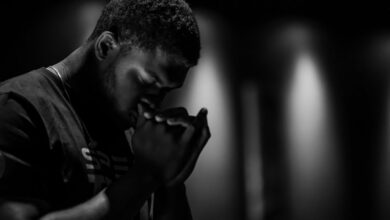The powerful Half Moon pose
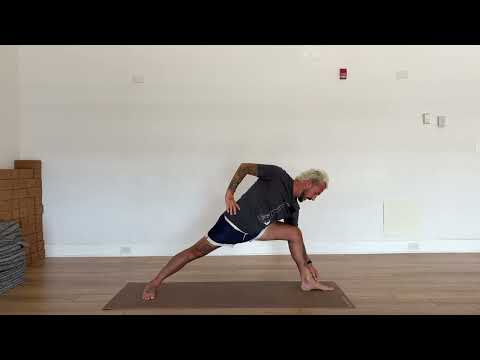
Have you ever stood on one leg, reaching your body into a perfect half-moon shape, feeling like you’re about to topple over at any moment? I remember my first time in Ardha Chandrasana (Half Moon Pose).
It was a test of balance, strength and focus, but as I held the pose I felt calm and clear, like everything in my body and mind had aligned.
It’s an experience I know many yoga practitioners have—and one that has many physical and mental benefits.
What is Ardha Chandrasana?
Ardha Chandrasana, or Half Moon Pose, is a standing balance asana in modern yoga, from the Sanskrit:
- Ardha – half
- Chandra – moon
- Asana – pose
This beautiful and challenging pose mimics the shape of a crescent moon, giving a lovely stretch while strengthening the body.
Practicing Ardha Chandrasana involves balancing on one leg, with the other lifted parallel to the floor, one hand on the ground (or a block) and the other arm up.
Related>>> An interview on me on YOGI TIMES
The etymology and history of ardha chandrasana
The name Ardha Chandrasana comes from Sanskrit, with Ardha meaning “half”, Chandra meaning “moon” and Asana meaning “pose”.
The term refers to a balanced pose in the shape of a half-moon, both symbolizing the calm and cooling qualities of the moon and the strength required to hold the pose.
Historically the name Ardha Chandrasana has had different meanings. For example the 19th century text Sritattvanidhi used it to describe a different pose (Vrikshasana, or Tree Pose).
Related>>> Check out my 200 Hour online YTT
Swami Yogesvarananda in his 1970 book First Steps to Higher Yoga referred to it as a pose similar to Kapotasana (Pigeon Pose). But the modern practice popularized by B.K.S. Iyengar in his 1966 book Light on Yoga is what most people today recognize as the Half Moon Pose.
How to do ardha chandrasana (Step by step)
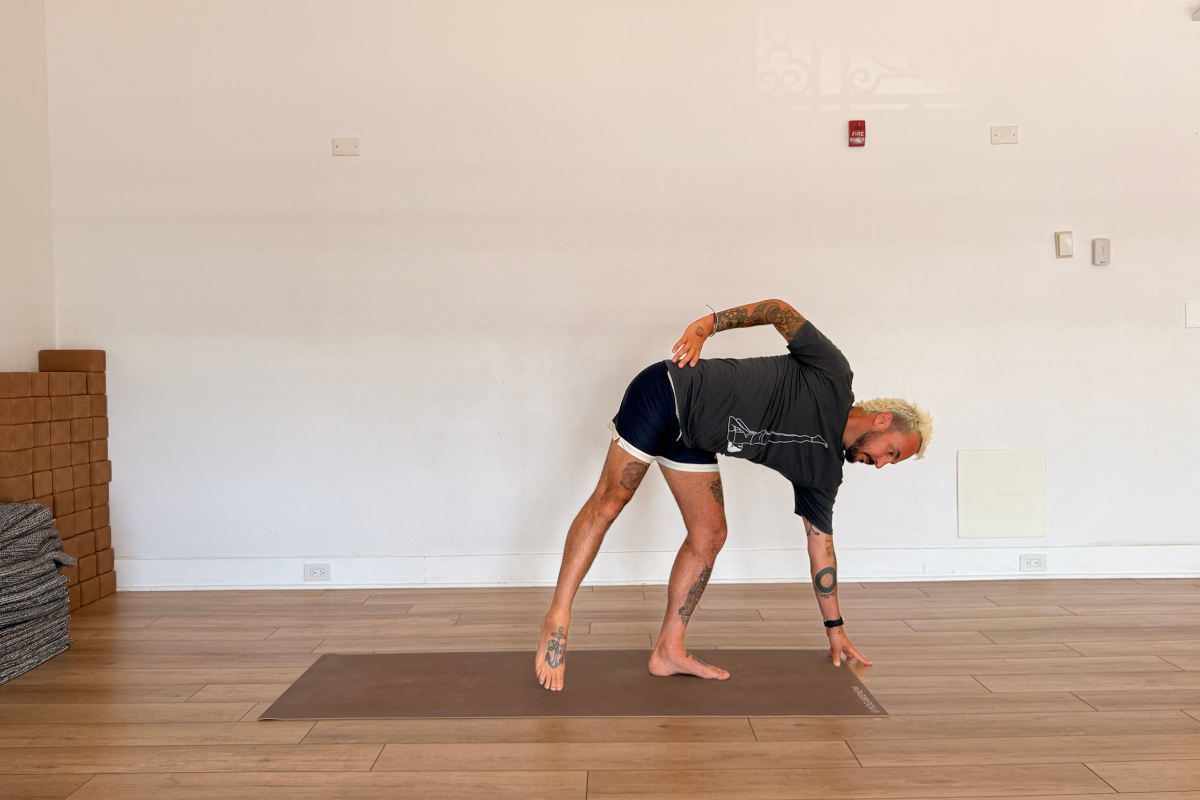

Ardha Chandrasana can be entered from Triangle Pose (Trikonasana). Here’s how to do it:
- Start in Warrior II (Virabhadrasana II): With your left foot forward, bring your hands parallel to the ground.
- Shift Weight to Front Leg: Move your weight into your front leg and start to lower your fingertips to the ground, either on the mat or on a block.
- Lift the Back Leg: Use the strength of your outer hip to lift your back leg, making sure it’s parallel to the ground.
- Align the Hips: Keep your hips open and aligned with the ground, turn your chest up as you extend your top arm up.
- Engage Core Muscles: Balance by drawing your core in and looking at your top hand.
- Adjust the Standing Leg: If needed, slightly bend the knee of your standing leg to create a stable base.
- Find Your Balance: Once stable, hold for several breaths before slowly coming out of the pose.
Variations:
- Parivrtta Ardha Chandrasana (Revolved Half Moon Pose): Twist your body towards the standing leg.
- Baddha Parivrtta Ardha Chandrasana (Bound Revolved Half Moon Pose): A more advanced version where the arms are bound around the standing leg.
Modifications and props for ardha chandrasana
Ardha Chandrasana can be tricky, especially for beginners or those with limited flexibility. But using props and making a few adjustments can make this pose more accessible while still giving you the benefits of balance and strength. Here are some options to modify the pose for you:
- Using a Block:
- If you can’t reach the ground with your hand, place a block under your bottom hand. This will reduce the strain on your lower back and keep your body more aligned.
- Start with the block at its highest setting. As you get more balanced, you can lower the block to the middle and then the lowest setting.
- Wall Support:
- Practice Half Moon Pose near a wall for support. Place your lifted foot against the wall to help stabilize the pose as you get used to balancing on one leg. * This can also be a reference point to help you place your leg more parallel to the ground.
- Knee Down Variation:
- If you can’t balance, you can modify the pose by keeping one knee on the ground. This will take some of the strain off your standing leg while still allowing you to stretch and strengthen the body.
- Using a Chair:
- If you can’t balance in this pose, try using a chair for support. Place your lifted leg on the back of the chair while you focus on lifting your chest and extending your top arm to the sky.
These modifications so everyone can benefit from Half Moon Pose while working on balance and alignment.
Common issues in Ardha Chandrasana
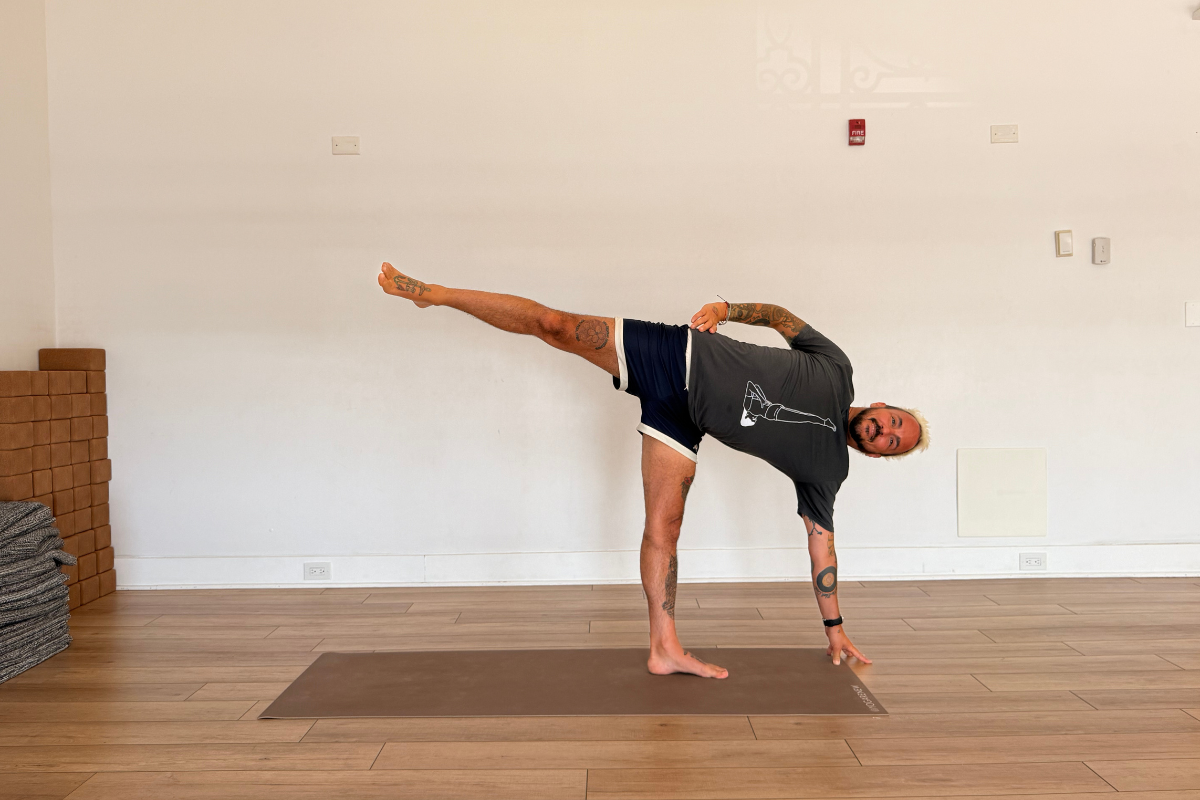

As simple as Ardha Chandrasana may look, it can be tricky. Here are some common problems and solutions:
- Balancing:
- Balancing is one of the main challenges in Half Moon Pose. Beginners often struggle to keep the lifted leg parallel to the ground while keeping the gaze steady.
- Tip: Keep a slight bend in the standing leg to create a more stable base. Engage your core and gaze at a fixed point, either on the ground or at the lifted hand.
- Misaligned Hips and Shoulders:
- One of the most common alignment mistakes is allowing the chest and shoulders to twist too much, causing the hips to misalign and the back leg to drop.
- Tip: Stack your hips on top of each other and avoid rotating the chest down towards the ground. Instead, gently rotate your upper body towards the ceiling to open the chest and align the hips.
- Lower Back Strain:
- If the bottom hand is too far away from the body or the back leg is not engaged, it can cause lower back strain.
- Tip: Engage your core and don’t collapse into the lower back. If needed, use a block under your hand to reduce the distance between your hand and the ground, to align the spine.
- Tight Hamstrings or Hips:
Benefits of Ardha Chandrasana (Half Moon pose)
Ardha Chandrasana has many benefits for both physical and mental aspects of yoga practice. Here are some of the advantages of including Half Moon Pose in your practice:
- Improves Balance and Coordination:
- The main benefit of Ardha Chandrasana is to improve balance and coordination. By balancing on one leg and reaching in opposite directions, you challenge your body to build strength and stability.
- Strengthens Key Muscle Groups:
- Core Strength: Ardha Chandrasana requires core engagement to balance. The obliques, rectus abdominis and lower back muscles are all involved.
- Legs and Feet: The pose strengthens the standing leg, especially the thighs, ankles and feet. It also tones the lifted leg, targeting the abductors, quadriceps and calves.
- Hip Flexibility: This pose stretches and strengthens the hip flexors, groin and hamstrings – especially good for athletes like runners or cyclists who often have tightness in these areas.
- Stretches the Upper Body:
- Ardha Chandrasana opens the chest, shoulders and ribcage which can help to relieve tension from sitting at desks or computer screens all day. The pose also stretches the hamstrings and glutes.
- Mental Clarity:
- As a balancing pose, Ardha Chandrasana requires concentration, focus and mindfulness. Maintaining balance while lifting the back leg and extending the arms requires full body awareness which can help to clear the mind and reduce stress.
- Detoxifies the Body:
- The twisting variation of Ardha Chandrasana (Parivrtta Ardha Chandrasana) helps to stimulate digestion and detoxify the body by massaging the internal organs and deep twisting.
Counter poses to Ardha Chandrasana
After a challenging pose like Ardha Chandrasana, it’s important to counterbalance the body. Here are a few counter poses:
1. Uttanasana (Standing Forward Bend)
- A gentle forward bend to release tension in the back and legs after the intense stretch in Half Moon Pose.
- Prasarita Padottanasana (Wide-Legged Standing Forward Bend)
- This pose opens the hamstrings and hips, releasing any tension in the lower body that may have accumulated from balancing on one leg.
- Child’s Pose (Balasana)
- A resting pose to recover, release any remaining tension in the back, hips and shoulders.
The anatomy of Ardha Chandrasana: Engaging and stretching the full body
Ardha Chandrasana (Half Moon Pose) is a full body pose that engages multiple muscle groups from core to legs, hips and upper body. Here’s a breakdown of the muscles worked and the actions involved:
- Standing Leg.
- Glutes and Hip Abductors: As you lift the back leg, the gluteus medius and minimus engage to lift the leg and stabilize the pelvis.
- Quadriceps and Hamstrings: The standing leg is slightly bent, engaging the quadriceps and hamstrings to hold the leg in place and balance.
- Calves: The calf muscles in the standing leg help to stabilize the body and maintain alignment.
- Lifted Leg.
- Hip Flexors: The hip flexors (rectus femoris and sartorius) are activated to lift the leg and maintain its parallel to the ground.
- Abductors and Quadriceps: The abductors in the lifted leg (gluteus medius and minimus) help to keep the leg extended outwards and the quadriceps to straighten the knee.
- Calf and Foot Muscles: Flexing the lifted foot ensures active engagement through the calf and ankle, creating a stronger foundation.
- Core Muscles
- Upper Body and Arms:
- Shoulders: The muscles of the shoulder girdle (deltoids, rotator cuffs and serratus anterior) help to stabilize the upper body. Engaging the serratus anterior helps to keep the shoulder blade away from the spine and aids in the reach of the top arm.
- Chest: The chest muscles (pectoralis major and minor) are engaged as you twist the torso to open the chest to the ceiling. This helps to prevent the upper body from collapsing and intensifies the stretch across the chest and shoulders.
- Head and Neck:
- The head and neck remain neutral or turn to gaze upwards or forward, depending on your level of balance and comfort. Engaging the neck muscles helps to keep the head in alignment with the rest of the body.
Variations of Ardha Chandrasana (half moon pose)
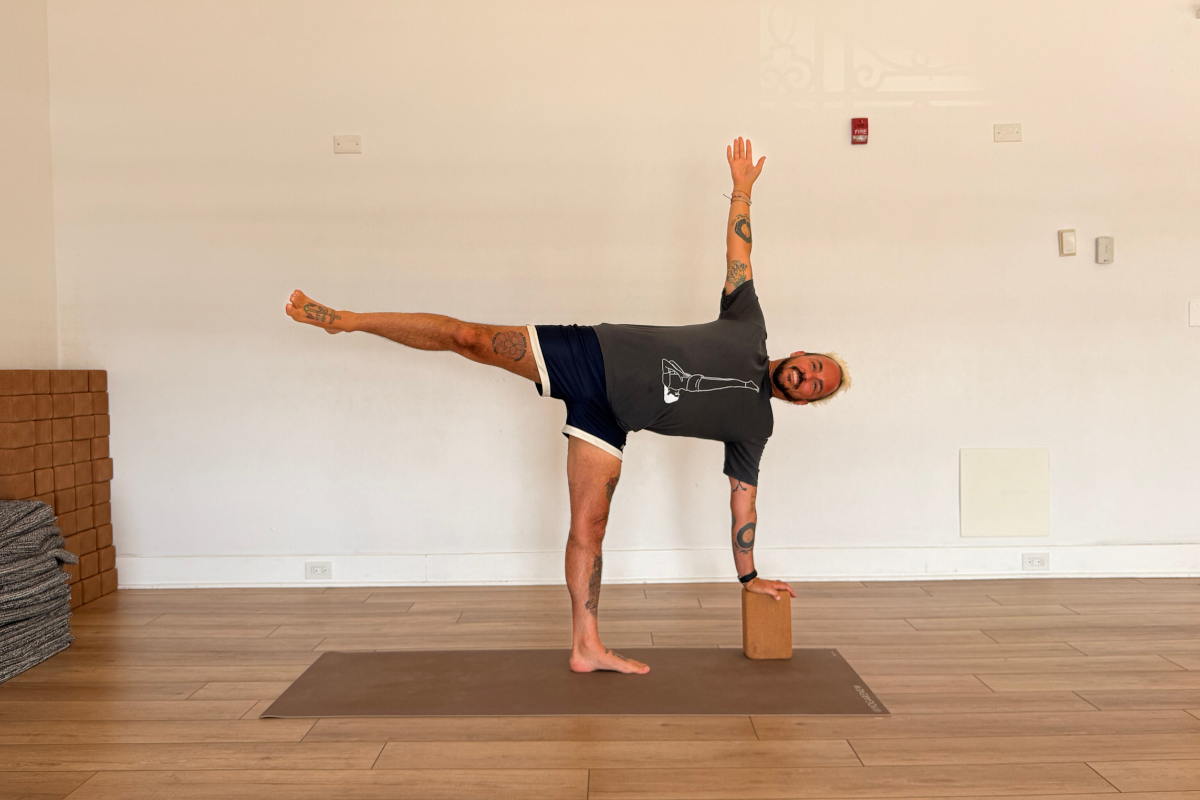

Ardha Chandrasana can be modified in many ways to make it more accessible or more challenging. Here are a few variations:
- Parivrtta Ardha Chandrasana (Revolved Half Moon Pose)
- Baddha Parivrtta Ardha Chandrasana (Bound Revolved Half Moon Pose)
- Ardha Chandra Chapasana (Sugar Cane Pose):
* In this variation, after you reach the classic Half Moon Pose, you bend the lifted leg and reach back to grab the foot with the top hand.
This action pulls the foot towards your glutes, creating a gentle backbend that opens the chest and engages the core.
This variation adds an extra layer of balance, flexibility and strength, especially for the quadriceps, hips and shoulders.
- Half Moon Pose on a Chair:
- Half Moon Pose with Knee Down:
- Ardha Chandrasana on the Wall:
- Practicing Ardha Chandrasana against a wall for support can make you feel more secure as you lift your leg and extend your arms. The wall can be a support for your lifted foot and guide your leg’s alignment.
Ardha Chandrasana: a mindful practice for strength and balance
As you practice Ardha Chandrasana, you’ll see how important mindfulness, balance and alignment are. This pose is an opportunity to deepen your yoga practice by cultivating patience, coordination and concentration.
While Half Moon Pose challenges your balance, it also strengthens key areas of your body, flexibility, mental clarity and sense of grounding.
The benefits go beyond the physical too. Ardha Chandrasana requires focus, calmness and awareness of breath. As you balance on one leg, stretching one arm up and the other down, there’s an inherent practice of being present in the moment.
The pose asks you to face challenges with grace and patience—just like in life. When you stumble, just like in yoga, it’s about finding your breath and resetting your focus.
Health benefits of Ardha Chandrasana
Ardha Chandrasana is not only a physically demanding pose but also has health benefits that go beyond flexibility and balance. Here are some additional health benefits of practicing this pose:
- Improves Posture:
- Ardha Chandrasana opens the chest which is good for those who sit for long hours especially at desks or in front of computers. The pose encourages upright posture and counters the slouching that comes from poor sitting habits.
- Stabilizes the Spine:
- Boosts Circulation:
- Enhances Mental Clarity and Focus:
- Relieves Tension and Stress:
Counter poses to Ardha Chandrasana
After a challenging pose like Ardha Chandrasana it’s important to balance the body and release the built-up tension. Counter poses restore alignment and provide gentle stretches to release the spine, legs and hips.
- Uttanasana (Standing Forward Bend):
- Prasarita Padottanasana (Wide-Legged Forward Fold):
- Benefits: This wide-legged forward bend opens the inner thighs, hamstrings and hips. It also releases tension in the back after a deep balance pose.
- How to do it: Stand with feet wide apart and fold forward, bringing your hands to the floor or a block. Keep your legs straight, engage the muscles of your thighs and let your head drop towards the floor.
- Child’s Pose (Balasana):
- Benefits: Child’s Pose is a restorative pose that stretches the back, hips and thighs. It relaxes the body and restores calm after the intensity of balancing poses.
- How to do it: Kneel on the floor, sit back on your heels and lower your chest to the ground, extend your arms forward. Breathe deeply and let your body fully relax in this restorative pose.
- Supta Baddha Konasana (Reclining bound angle Pose):
- Benefits: This pose opens the hips and relaxes the lower back. After engaging the legs and core in Half Moon Pose this gentle stretch is much needed for the pelvis and inner thighs.
- How to do it: Lie on your back, bring the soles of your feet together and let your knees drop out to the sides. Rest your hands on your belly or by your sides and focus on deep, restorative breathing.
- Savasana (Corpse Pose):
- Benefits: Savasana is the ultimate counter pose for all yoga sequences. It gives your body a chance to absorb the benefits of the practice and relax completely.
- How to do it: Lie flat on your back, arms by your sides, palms facing upward. Close your eyes, let go of any tension and focus on your breath. This pose allows your body to reset and restore after more intense physical work.
Ardha Chandrasana in your practice
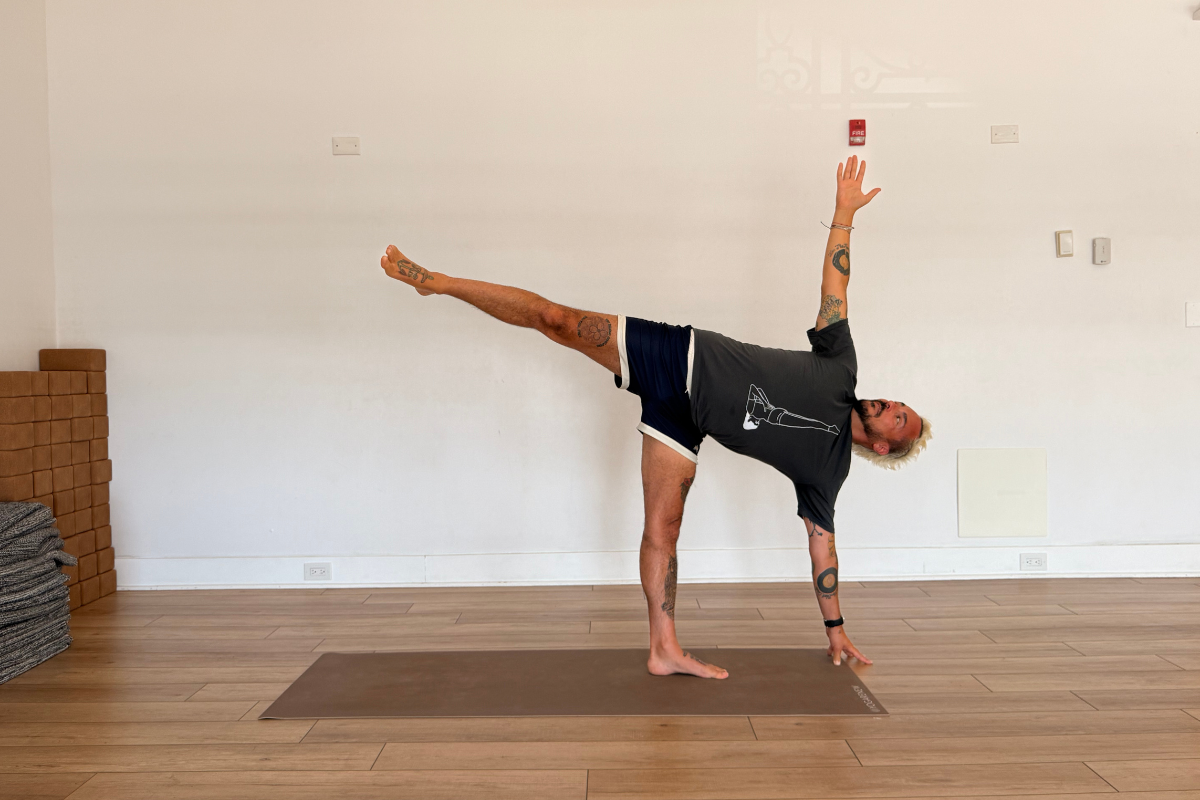

Ardha Chandrasana can be used in different parts of your yoga practice. Here are some sequencing ideas:
- Preceding Poses:
- Utthita Trikonasana (Extended Triangle Pose): A natural precursor to Ardha Chandrasana, Utthita Trikonasana opens the hips and stretches the legs preparing the body for balance.
- Virabhadrasana II (Warrior II): The grounding and strengthening benefits of Warrior II make it an excellent lead-in to Half Moon Pose. This foundational pose prepares the legs, hips and shoulders for the balancing challenge ahead.
- Sequencing Ideas:
- Warm-Up Sequence: Start with a few gentle poses to open the hips and hamstrings, such as Adho Mukha Svanasana (Downward-Facing Dog) and Utthita Trikonasana.
Move into Virabhadrasana II, then flow into Ardha Chandrasana on the right or left side. Finish with counter poses like Prasarita Padottanasana or Uttanasana.
- Standing Sequence: After warming up the legs and hips sequence a series of standing poses that incorporate balance, such as Vrksasana (Tree Pose) and Warrior III (Virabhadrasana III).
Then transition into Ardha Chandrasana to challenge your balance and coordination.
- Core-Focused Sequence: Start with core-strengthening poses like Plank and Navasana (Boat Pose). Follow up with standing poses like Warrior II and Utthita Trikonasana.
Then build up to Ardha Chandrasana to fully engage the core while testing your balance.
- Warm-Up Sequence: Start with a few gentle poses to open the hips and hamstrings, such as Adho Mukha Svanasana (Downward-Facing Dog) and Utthita Trikonasana.
- Restorative Sequence:
Tip: Start with a block or wall for support as you build strength and confidence in the pose. As you get more comfortable practice without props to challenge your balance.
Be patient with yourself and embrace the challenge. Each time you fall out of the pose simply reset, focus and try again!
Ardha Chandrasana in your daily practice
Ardha Chandrasana or Half Moon Pose is a pose that combines strength, balance, flexibility and focus in yoga. Whether you want to improve your physical practice or cultivate more mental clarity this pose can help you with both.
With regular practice you will not only strengthen your body but also increase your awareness and mindfulness on and off the mat.

![[Blog] SoWhat [Blog] SoWhat](https://j.bcoachs.com/wp-content/uploads/2025/08/Blog-SoWhat-390x220.png)
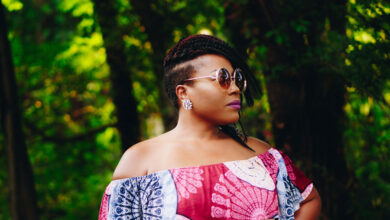
![out for a while: Recoil – 1+2 [Mute] out for a while: Recoil – 1+2 [Mute]](https://j.bcoachs.com/wp-content/uploads/2025/08/out-for-a-while-Recoil-12-Mute-390x220.jpg)
